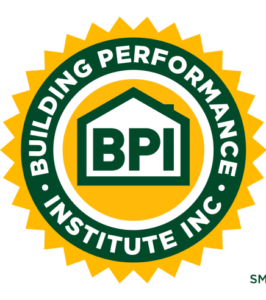Sometimes, you get what you pay for. But most of the time, it pays to do a little research first.
Today we want to give an example of the importance of making educated purchases. There are a variety of insulation materials to choose from, and most have their strengths and weaknesses. However, one stands out from the rest as being utterly useless.

Foil-Faced Bubble Wrap – is this stuff a joke?
This is basically a layer of “bubble-wrap” attached to a sheet of foil faced lining. Bubble-wrap is, well, pretty much what it sounds like. It’s a sheet of plastic with air bubbles, not unlike what you might find in a package you got in the mail. The plastic is simply a waste of space, a filler. It has barely any thermal resistance (insulating value), and no conceivable purpose other than being something to stick the foil to.
The foil, on the other hand, actually has a use, since it functions as a radiant barrier. In short, a radiant barrier is a reflective surface that assists in insulation, if it faces an empty air-space. Although foil reflects visible light, this isn’t relevant inside a dark wall or attic. More importantly, foil also reflects infrared radiation (a longer wavelength of light that penetrates walls and causes significant heat transfer).
Foil-faced bubble wrap is commonly used for ducts, since it’s fairly easy to wrap around them. However, to take advantage of the radiant barrier, you have to create about 2″ of air-space between the foil and the duct, which is extremely difficult to do, especially on a curved surface. In the end, it’s virtually never installed this way, and thus it accomplishes nothing.

Despite all this information being widely available, foil-faced bubble wrap (or “double-bubble”) is still being produced and sold by major distributors. Advertising is a powerful thing, especially when buyers don’t understand the most important attribute of the products they’re considering. In this case, that attribute is called R-value.
What exactly is R-value?
R-value is a measure of thermal resistance, or resistance to heat transfer. A low R-value is 1 (no significant thermal resistance), and an extremely high value is somewhere around 45 (for vacuum-insulated materials). There are three mechanisms of heat transfer: conduction, convection, and radiation. All three mechanisms are relevant, in practice. However, the R-value displayed on the packaging for insulation is supposed to represent the material’s resistance to conduction, not convection or radiation.
By contrast, the effective overall R-value of, for example, a wall, should take all three mechanisms of heat transfer into account. Walls can be constructed in different ways, and the conductive resistance of the insulation isn’t the only relevant factor. For example, resistance to convective heat transfer is mostly dependent on the quality of the air sealing.
The above distinction has been blurred by advertisers, who have invented vague terms like “R-value equivalent” in an attempt to avoid putting the real numbers on their packaging. In the case of foil-faced bubble wrap, it should read something like “R-value 1, plus radiant barrier.” Of course, if it said that, no one would buy the product as a minimum R value standard for duct work is R-6.
I get it, don’t buy the bubble wrap. So, what types of insulation should I look for?
Here at Eco Performance Builders, we prefer to use wet blown-in cellulose for attics and walls. Foam and fiberglass are okay too in certain situations. Rigid foam board (closed cell) can be very effective in places like vaulted or cathedral ceilings or even sometimes as floor insulation.
Our ducts, however, come pre-manufactured with an R-8 layer of foil-faced fiberglass with a vapor barrier on the outer layer. To supplement this, we also use FSK (Fiber Stranded Kraft). This is a similar material to what the ducts come with, but it’s rated R-13, plus 6 more for the radiant barrier. It’s best used on supply and return plenums (the metal boxes on either side of a furnace or air handler), or simply anywhere a duct has a sheet metal connection to insulate. This is exactly where the foil-faced bubble wrap is used so often by the HVAC industry.
For more information, call (925) 363-4498 or e-mail info@epbuilders.com to speak to a technician, or schedule an energy audit.













